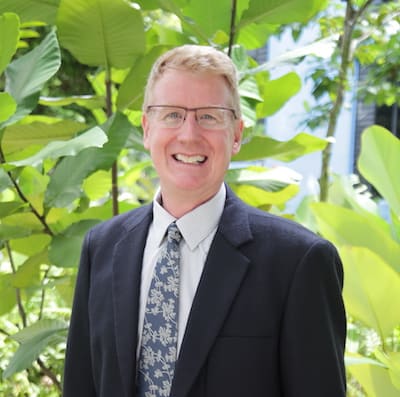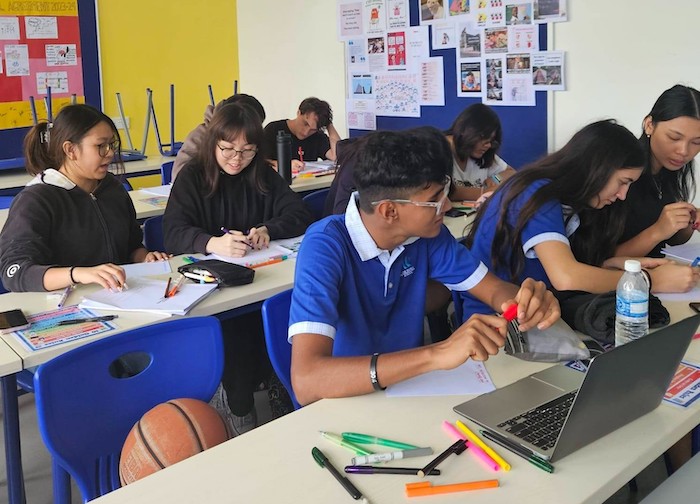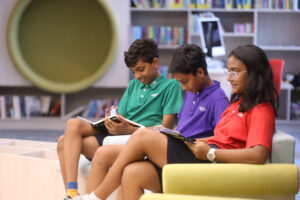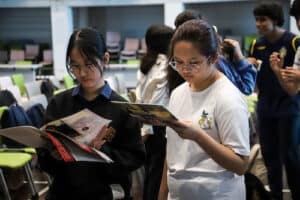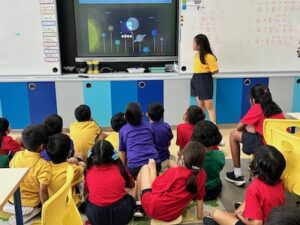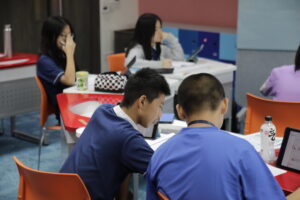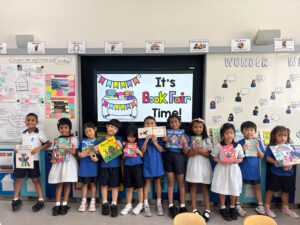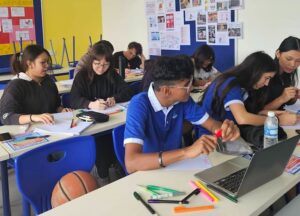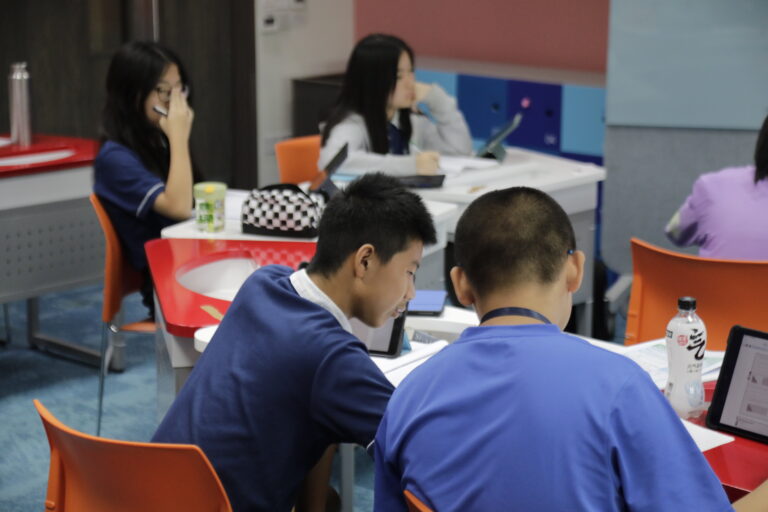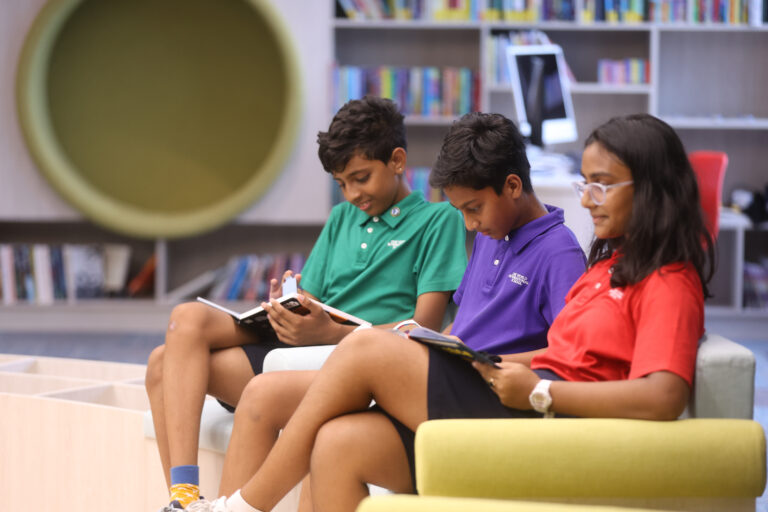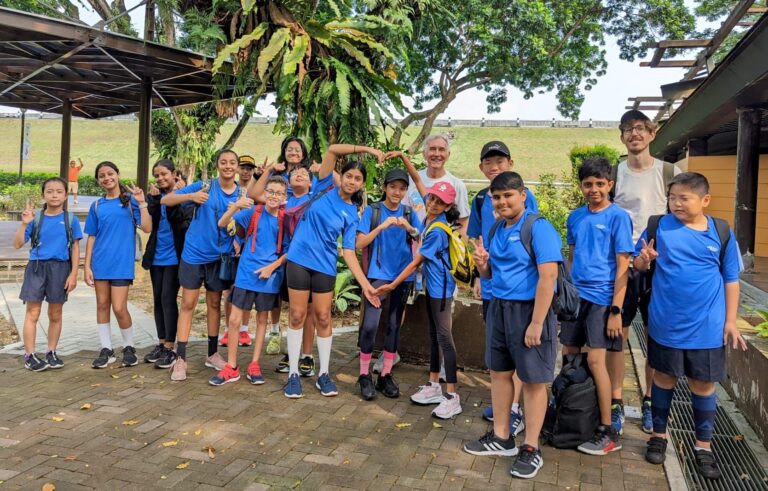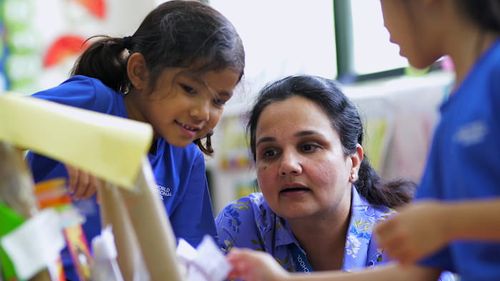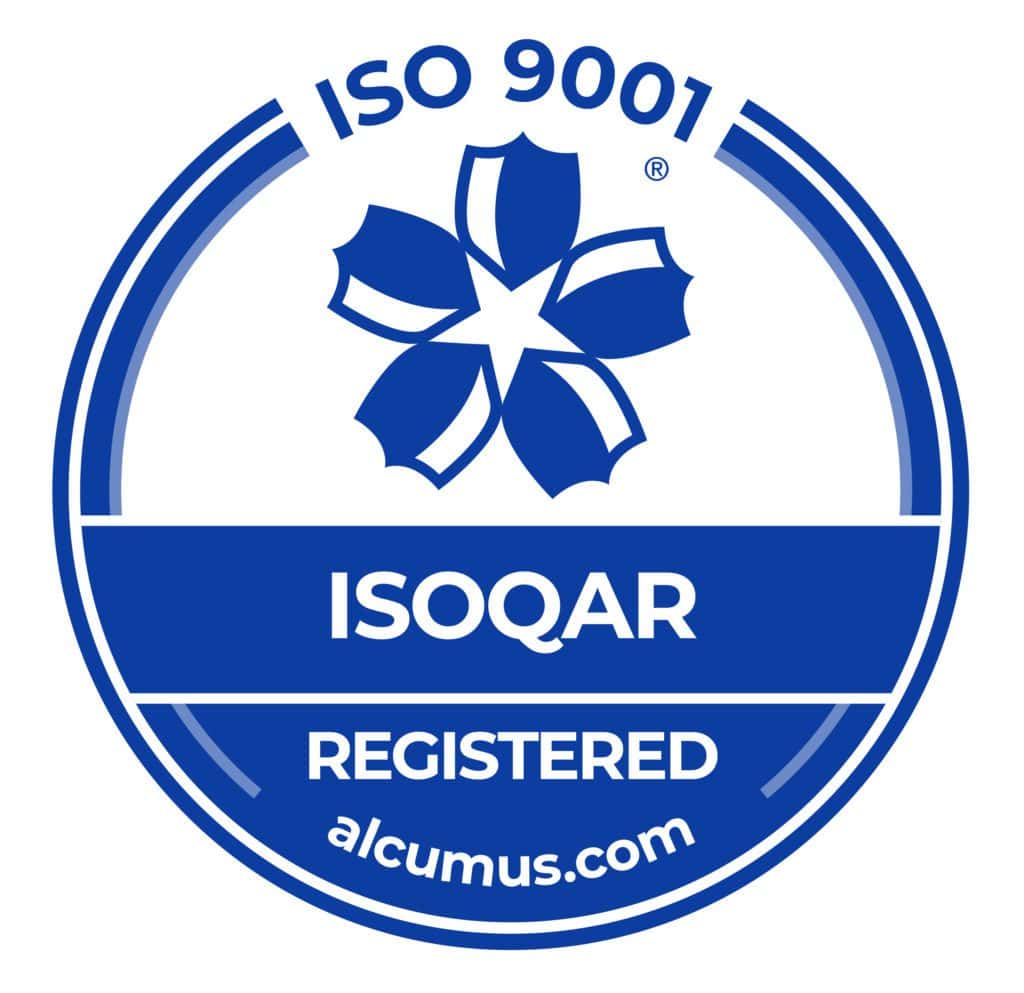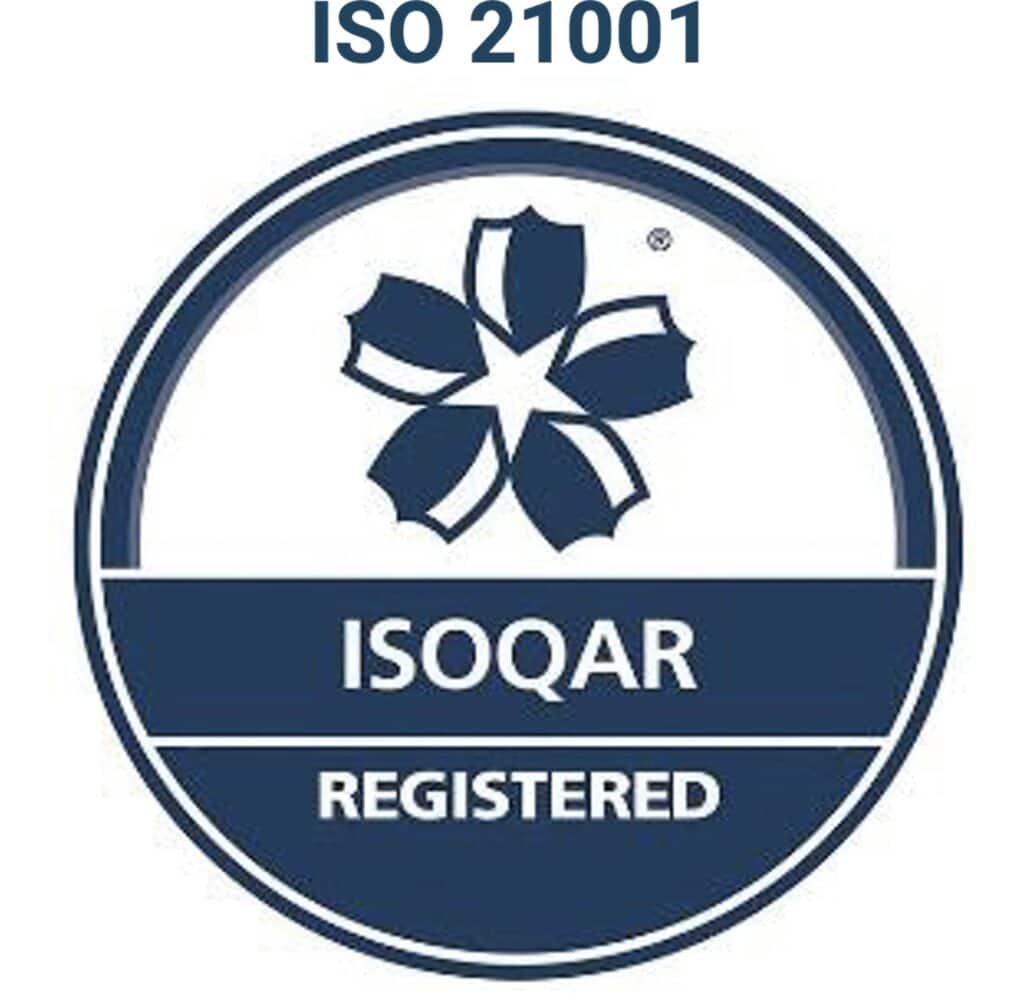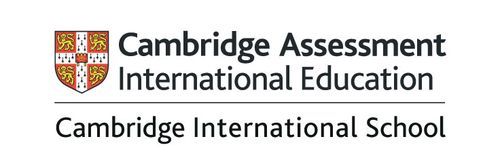While the process of relocation from the USA to Singapore will be an exciting opportunity for your family, transitioning from one school to another can be a daunting experience for your child. Whether you are transferring your child into a new primary years programme, or encouraging your teenage child to consider the IBDP during secondary school, you will want to support them as they enter a new stage of their education.
While there are distinct differences between the American curriculum and the IB PYP and IBDP, that we offer at One World International School Nanyang Campus, it is possible to enjoy a smooth and seamless transition when you have the right information, resources and support.
Understanding the Key Differences
Both the American curriculum and IB Programmes have similar goals — to provide students with a well-rounded academic experience that creates a foundation they can build upon throughout their lifetimes. However, each curriculum has its approach and focus, so it’s important to understand the key differences between the two.
Characteristics of the American Curriculum
The American curriculum is known for its broad and balanced approach to education, and its emphasis on high standards of achievement. Throughout this programme, students work toward developing the competencies needed to thrive in academic and professional settings.
According to Education Advanced, here are some important characteristics to note about the American curriculum:
- Math and reading are the focal points in the primary years, with students focusing on critical, foundational concepts that they can build upon later.
- By upper elementary, students start exploring more advanced topics, such as social studies and science.
- In middle school and high school, students have the opportunity to study non-core subjects, allowing them to explore their interests and begin focusing on a potential career field.
- In many US states, standardised test results play an important role in guiding the education process. Students will take regular standardised tests to check progress throughout their academic careers.
- Creativity and innovation are a focal point of the American curriculum, and students are encouraged to collaborate with their peers.
- The vast range of subjects gives students the freedom to explore their interests and develop specific skills that may be transferable to their chosen career field.
Distinctive Features of IB Programmes
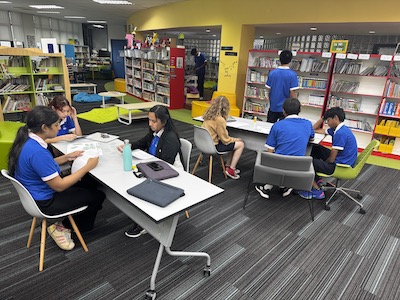
The International Baccalaureate, commonly known as the IB, provides three distinct programmes, among others: the Primary Years (PYP), the Middle Years (MYP) and the Diploma Programme (DP).
In the PYP and MYP, the IB provides a framework for education and requires an additional curriculum to be used to supply the basic subject content. OWIS Nanyang used the National Curriculum of the UK to underpin the learning objectives of the IB PYP. Similarly, other schools might embed the American or Australian curriculum.
The Diploma Programme is a full curriculum taught over two years that challenges high school or Secondary school students at a level that is aligned with that of universities. Coincidentally, although it is an international programme, the IBDP is very popular in American schools with the highest number of IBDP schools found there.
IB Programmes, such the IB PYP and IBDP that we offer at OWIS Nanyang, are based on a widely-recognised, research-based approach to education. Designed to be broad, balanced and concept-based, the coursework supports academic excellence and personality development.
Distinctive features of the IB Programmes include:
- The IB, at all levels, emphasises an inquiry-led approach to learning. Students are encouraged to ask questions, discuss subjects, formulate conclusions and test theories. Educators often serve as a guide within the classroom environment.
- The programmes focus on empowering students with the skills they need — such as thinking, research, communication, social and self-management skills — to regulate and determine their learning experience.
- The IB incorporates a strong sense of international-mindedness into coursework and materials, allowing students to enjoy a truly multicultural learning environment and providing them with opportunities to develop a deep sense of cultural awareness.
- Areas of study within the IBDP curriculum include Mathematics, Sciences, the Arts, Language and Literature, giving students a broad exposure to a wide range of topics. Interdisciplinary themes allow students to see the connections between different subjects, and to discover how to relate their learning to real-world concepts.
Academic and Cultural Adjustments
Students who are transitioning from the American curriculum to an IB school will experience academic and cultural shifts. These shifts, however, do not have to disrupt their educational process or their experience at school. By being aware of the differences between the two programmes and working to support students throughout their transition, parents and educators can alleviate the strain and stress caused by this adjustment.
Strategies for a Smooth Transition
The following strategies will ease the transition from a school in the US to an IB school, such as One World International School Nanyang Campus in Singapore:
- Improving research skills before transitioning. The IBDP curriculum is heavily dependent upon research and writing, so it will be important for your child to be familiar with the best research practices before you arrive. They can hone their research skills by learning the best keyword search practices in research environments, familiarising themselves with different research databases and learning how to identify quality sources for any research project.
- Begin reading more frequently, and choosing books, articles and magazines that may be about unfamiliar topics. The broad scope of the IBDP curriculum may seem overwhelming, so by becoming well-versed in a variety of topics in advance, your child may feel less intimidated in their new classroom environment.
- Prioritise time management skills. The IBDP is an inquiry-led programme, which means that your child will be responsible for the direction of their learning. Before enrolling at an IB school, such as OWIS Nanyang, they should learn to manage their calendar, limit their screen time and prioritise their tasks so they can effectively manage the course load for multiple subject areas.
- Contact the new school in advance and ask to be connected with a mentor or Coordinator. Knowing what resources are available to you in advance will ease the stress and burden of the impending transition.
The Role of Extracurricular Activities Within the IB Framework

Fortunately, the IB framework promotes the importance of extracurricular activities, so it will be easy for your child to feel as if they are an integral part of their new school community. As an inquiry-led, skills-based curriculum, the IB encourages students to get involved in extracurricular activities that will allow them to explore their interests, develop a greater sense of self-confidence and self-worth and learn how to work collaboratively with their peers.
At OWIS Nanyang, we offer a wide range of extracurricular and co-curricular activities that are designed to support students’ interests, complement the IB curriculum and encourage students to enjoy a healthy and active lifestyle. Some examples of our extracurricular and co-curricular activities include:
- Sports
- Arts and humanities clubs
- Special interest clubs
- Music and dance performance
- Language learning opportunities
Students who are relocating from another country or transitioning from another school will find that extracurricular activities provide them with an opportunity to make new friends and become accustomed to the culture of their new home. Through these activities, they will discover shared commonalities with their new classmates, which can help ease the social stress of any school transition.
Support Systems for Students and Parents
There are support systems for students and families who are relocating from another country or simply transitioning to an IB school because they believe in the power of this curriculum. By being aware of the resources and opportunities that are available to you and your child, you can enjoy a successful transition to your new school environment.
How You Can Support Your Child’s Transition to an IB School
As a parent, you play a vital role in the success of your child’s transition to an IB school. You can best support your child by:
- Learning more about the IB. By developing an in-depth understanding of this inquiry-led, skills-based programme, you can easily answer your child’s questions or explain parts of the curriculum that they don’t understand. Understanding the components of the IB PYP and IBDP will allow you to assist your child as they work through their coursework and select their classes.
- Talking to other parents in the school community. Other parents who have experienced the curriculum and seen its impact on their child can provide you with relatable tips and advice that can make this transition less overwhelming for both you and your child.
- Encouraging your child to take breaks from their school work and to take care of themselves. Taking a walk together in the evening before they begin their homework, or encouraging them to spend time doing something they enjoy, will help them better balance the workload and prioritise their tasks.
- Becoming a part of the school community. Take advantage of volunteer opportunities so you can see the curriculum in action on campus, and be sure to attend school events. Many after-school events at OWIS Nanyang highlight the strength of interdisciplinary learning, which is a focal point throughout the IB.
Discover the School-Based Resources that are Available to You and Your Child
As one of the leading international schools in Singapore, OWIS Nanyang attracts students from around the world. Our teachers, school leaders and staff members are familiar with working with students transitioning from schools that offer the American curriculum. We offer an exceptional pastoral care programme that ensures that each student, as well as every family, receives the personalised support they need to succeed academically, emotionally, socially and physically.
Learn More About the IB Curriculum at OWIS Nanyang
At OWIS Nanyang, we are proud to offer the IB Primary Years Programme and IB Diploma Programme to students in primary and secondary school, with the Cambridge IGCSE in the middle school years. Our holistic approach to education perfectly complements the IB PYP and IBDP, allowing us to easily implement this curriculum within our framework.
Schedule your campus tour today to learn more about the IB PYP and IBDP at OWIS Nanyang.
